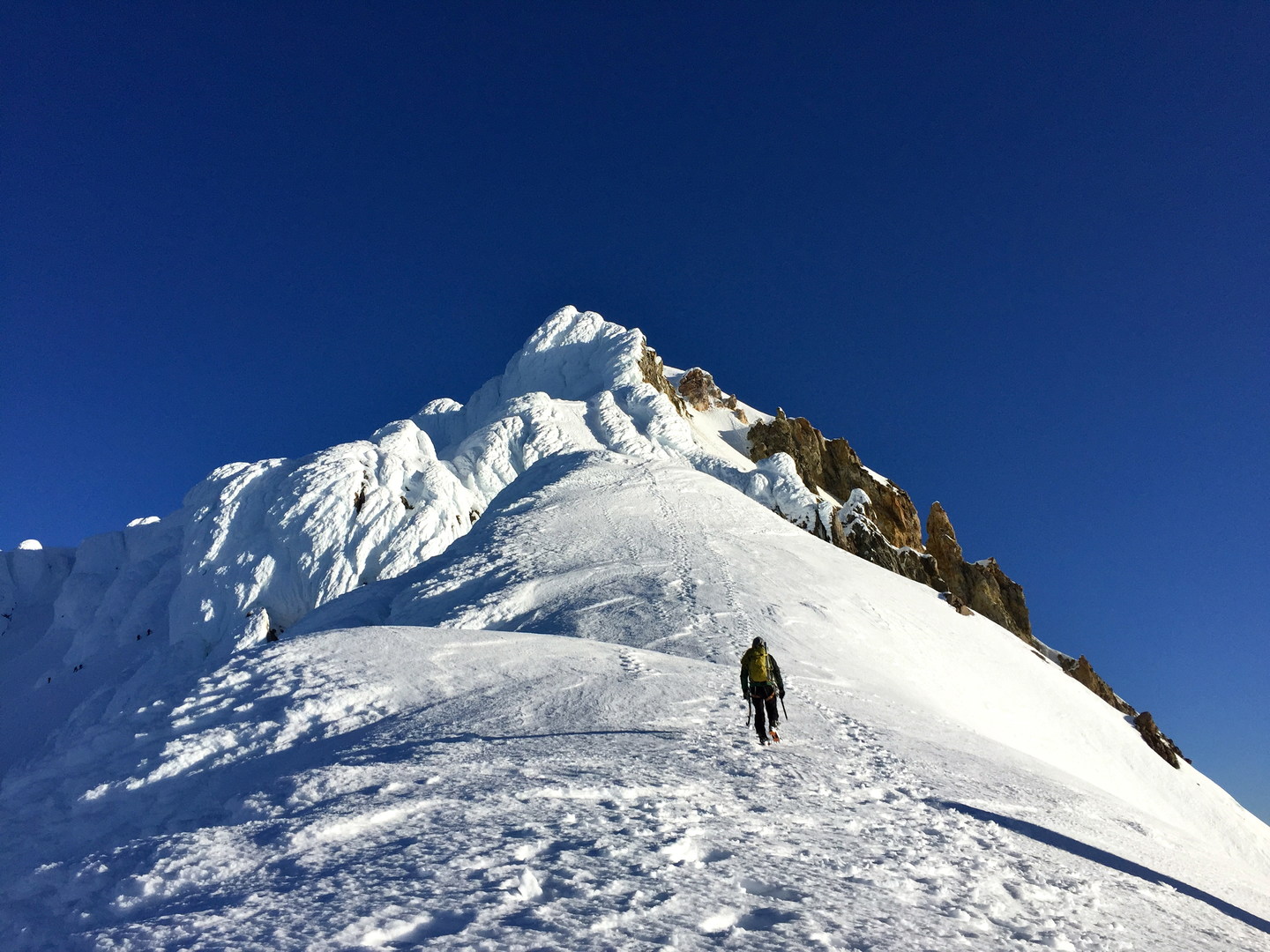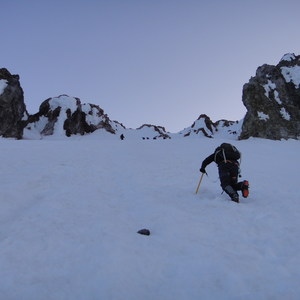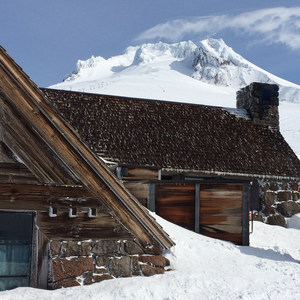At 11,250 feet, Mount Hood is the tallest peak in Oregon. Given this lofty status, its proximity and visible prominence from the Portland area, and with paved access to Timberline Lodge (5,800 feet), it's a very popular mountaineering objective. According to the Forest Service, more than 10,000 climbers visit each year, making it the most climbed snow-covered mountain in the Americas.
Most climbers take the standard south routes via the Old Chute or Pearly Gates to the summit. These routes are highly enjoyable, but, given the mountain's popularity, they can also become very crowded. Mount Hood has many summit routes, but as is frequently the case, the less popular and less crowded alternate routes are usually longer, more technical, or both.
This route is a variation on the standard south routes, taking the Flying Buttress and Wy'east Ridge to the summit. This route maintains a similar commitment grade as the standard south routes (grade II), but escapes the frequent line of climbers ascending the Hogsback. However, it is a bit longer and requires more technical climbing skills as well as a tolerance for steep, exposed snow gullies.
An alpine start is all but required for this climb so that climbers can reach Devil's Kitchen no later than sunrise. The Wy'east Ridge ascends steep snow gullies on its eastern aspects, and it begins to soften early in the day. Additionally, the Wy'east Ridge has been known to avalanche, so climbers following this route should be aware of current conditions.
This route follows the standard southern approach to Devil's Kitchen (10,400 feet). From this point, rather than ascending the Hogsback, climbers head for the Devil's Headwall. The Flying Buttress is the rightmost, largest gully of the headwall. Ascending the Flying Buttress requires 400 feet of AI2 to AI3 climbing that tops out on the East Crater Rim along the Wy'east Ridge.
Once gaining the rim, there is a spectacular view of the summit block, the eastern aspects of the mountain, and a unique view down into the crater toward the Hogsback and Crater Rock. From this vantage point, most of the remaining ascent is visible, including the crux of the route, two steep snow gullies of 50- to 60-degree slope separated by an exposed traverse.
After completing the crux of the Wy'east Ridge it's a short, enjoyable stroll to the true summit. Descend via the standard south route, and if you have the appropriate gear, stashing skis or a snowboard at Devil's Kitchen makes for a much more enjoyable descent.
Before attempting a Mount Hood summit, always check the weather reports and avalanche and ice conditions. Also, be sure to sign the climbers register at the climbing center before your climb begins and to sign out on your way off of the mountain. This route requires more equipment and technical climbing expertise than the standard south routes via Old Chutes and Pearly Gates, and it should only be attempted by experienced mountaineers.
Backcountry Safety
Winter backcountry adventures can be dangerous outdoor activities that pose significant risks as conditions affecting safety (i.e. weather, snowpack stability, avalanche hazard) are constantly changing. Prior to engaging in these activities each individual should get the proper training to make safe decisions and be equipped to use avalanche safety resources and tools. Please visit our Backcountry Skiing and Avalanche Safety post to learn more.









Comments
Sign In and share them.